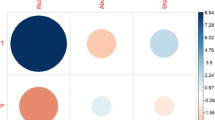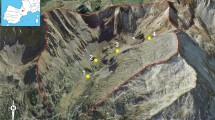Abstract
The bean flower thrips, Megalurothrips usitatus (Bagrall) (Thysanoptera: Thripidae), is an important pest of legume crops in South China. Yellow, blue, or white sticky traps are currently recommended for monitoring and controlling thrips, but it is not known whether one is more efficient than the other or if selectivity could be optimized by trap color. We investigated the response of thrips and beneficial insects to different-colored sticky traps on cowpea, Vigna unguiculata. More thrips were caught on blue, light blue, white, and purple traps than on yellow, green, pink, gray, red, or black traps. There was a weak correlation on the number of thrips caught on yellow traps and survey from flowers (r = 0.139), whereas a strong correlation was found for blue traps and thrips’ survey on flowers (r = 0.929). On commercially available sticky traps (Jiaduo®), two and five times more thrips were caught on blue traps than on white and yellow traps, respectively. Otherwise, capture of beneficial insects was 1.7 times higher on yellow than on blue traps. The major natural enemies were the predatory ladybird beetles (63%) and pirate bugs Orius spp. (29%), followed by a number of less representative predators and parasitoids (8%). We conclude the blue sticky trap was the best to monitor thrips on cowpea in South China.


Similar content being viewed by others
References
Akingbohungbe AE (1982) Seasonal variation in cowpea crop performance at Ile–Ife, Nigeria and the relationship to insect damage. Int J Trop Insect Sci 3:287–296
Allsopp E (2010) Investigation into the apparent failure of chemical control for management of western flower thrips, Frankliniella occidentalis (Pergande), on plums in the Western Cape Province of South Africa. Crop Prot 29:824–831
Atakan E, Canhilal R (2004) Evaluation of yellow sticky traps at various heights for monitoring cotton insect pests. J Agric Urban Entomol 21:15–24
Bosco L, Giacometto E, Tavella L (2008) Colonization and predation of thrips (Thysanoptera: Thripidae) by Orius spp. (Heteroptera: Anthocoridae) in sweet pepper greenhouses in Northwest Italy. Biol Control 44:331–340
Brødsgaard HF (1989) Coloured sticky traps for Frankliniella occidentalis (Pergande) (Thysanoptera, Thripidae) in glasshouses. J Appl Entomol 107:136–140
Broughton S, Harrison J (2012) Evaluation of monitoring methods for thrips and the effect of trap colour and semiochemicals on sticky trap capture of thrips (Thysanoptera) and beneficial insects (Syrphidae, Hemerobiidae) in deciduous fruit trees in Western Australia. Crop Prot 42:156–163
Broughton S, Herron GA (2009) Potential new insecticides for the control of western flower thrips, Frankliniella occidentalis (Thysanoptera: Thripidae). J Econ Entomol 102:646–651
Cai WZ, Pang XF, Hua BZ, Liang GW, Song DL (2001) General entomology. China Agricultural University Press, Beijing, 503p
Chang NT (1990) Color preference of thrips (Thysanoptera: Thripidae) in the Adzuki bean field. Plant Prot Bull 32:307–316
Chen WS (1980) A study on the relationship between thrips and the yield of peanut. Res Bull Taiwan DAIS 14:51–57
Childers CC, Brecht JK (1996) Colored sticky traps for monitoring Frankliniella bispinosa (Morgan) (Thysanoptera: Thripidae) during flowering cycles in citrus. J Econ Entomol 89:1240–1249
Cho K, Eckel CS, Walgenbach JF, Kennedy GG (1995) Comparison of colored sticky traps for monitoring thrips populations (Thysanoptera: Thripidae) in staked tomato fields. J Entomol Sci 30:176–190
Demirel N, Cranshaw W (2005) Attraction of color traps to thrips species (Thysanoptera: Thripidae) on Brassica crops in Colorado. Pak J Biol Sci 8:1247–1249
Demirel N, Yildirim AE (2008) Attraction of various sticky color traps to Thrips tabaci Lindeman (Thysanoptera: Thripidae) and Empoasca decipiens Paoli (Homoptera: Cicadellidae) in cotton. J Entomol 5:389–394
Ekesi S, Maniania NK (2000) Susceptibility of Megalurothrips sjostedti developmental stages to Metarhizium anisopliae and the effects of infection on feeding, adult fecundity, egg fertility and longevity. Entomol Exp Appl 94:229–236
Ekesi S, Maniania NK, Onu I, Lohr B (1998) Pathogenicity of entomopathogenic fungi (Hyphomycetes) to the legumes flower thrips, Megalurothrips sjostedti (Thysanoptera: Thripidae). J Appl Entomol 122:629–634
Fan YM, Tong XL, Gao LJ, Wang M, Liu ZQ, Zhang Y, Yang Y (2013) The spatial aggregation pattern of dominant species of thrips on cowpea in Hainan. J Environ Entomol 35:737–743
Gitonga LM, Overholt WA, Löhr B, Magambo JK, Mueke JM (2002) Functional response of Orius albidipennis (Hemiptera: Anthocoridae) to Megalurothrips sjostedti (Thysanoptera: Thripidae). Biol Control 24:1–6
Hoddle MS, Robinson L, Morgan D (2002) Attraction of thrips (Thysanoptera: Thripidae and Aeolothripidae) to colored sticky cards in a California avocado orchard. Crop Prot 21:383–388
Jackai LEN, Adalla CB (1997) Pest management practice in cowpea: a review. In: Singh BB, Mohan Raj DR, Dashiell KE, Jackai LEN (eds) Advances in cowpea research. Co-publication by International Institute of Tropical Agriculture (IITA) and Japan International Research Center for Agriculture and Science (JIRCAS), Ibadan, pp 240–258
Kim DI, Park JD, Kim SG, Kim SS, Paik CH (2004) Biological control of Thrips palmi (Thysanoptera: Thripidae) with Orius strigicollis (Hemiptera: Anthocoridae) on cucumber in plastic houses in the southern region of Korea. J Asia Pac Entomol 7:311–315
Kirk WDJ (1984) Ecological studies on Thrips imaginis Bagnall (Thysanoptera) in flowers of Echium plantagineum L. in Australia. Aust J Ecol 9:9–18
Kyamanywa S, Ampofo JKO (1988) Effect of cowpea/maize mixed cropping on the incident light at the cowpea canopy and flower thrips (Thysanoptera: Thripidae) population density. Crop Prot 7:186–189
Kyamanywa S, Tukahairwa EM (1988) Effect of mixed cropping beans, cowpeas and maize on population densities of bean flower thrips, Megalurothrips sjostedti (Trybom)(Thripidae). Int J Trop Insect Sci 9:255–259
Kyamanywa S, Balidawa CW, Ampofo KJO (1993) Effect of maize plant on colonization of cowpea plant by bean flower thrips, Megalurothrips sjostedti. Entomol Exp Appl 69:61–68
Lewis T (1973) Thrips: their biology, ecology, and economical importance. Academic Press Inc, London, p 349
Lewis T (1997) Flight and dispersal. In: Lewis T (ed) Thrips as crop pests. CAB International, Cambridge, pp 175–196
Liburd OE, Sarzynski EM, Arévalo HA, MacKenzie K (2009) Monitoring and emergence of flower thrips species in rabbiteye and southern highbush blueberries. Acta Horticult 810:251–258
Lu WH, Wei YJ, Tan DC, Zuo FH (2010) The enlightenment of Hainan toxic bean incident to Guangxi plant protection. J Guangxi Agric 25:86–87 (in Chinese)
Mfuti DK, Subramanian S, Tol RWHM, Wiegers GL, Kogel WJ, Niassy S, Plessis H, Ekesi S, Maniania NK (2015) Spatial separation of semiochemical Lurem-TR and entomopathogenic fungi to enhance their compatibility and infectivity in an autoinoculation system for thrips management. Pest Manag Sci. doi:10.1002/ps.3979
Muvea AM, Waiganjo MM, Kutima HL, Osiemo Z, Nyasani JO, Subramanian S (2014) Attraction of pest thrips (Thysanoptera: Thripidae) infesting French beans to coloured sticky traps with Lurem-TR and its utility for monitoring thrips populations. Int J Trop Insect Sci 34:197–206
Nabirye J, Nampala P, Kyamanywa S, Ogenga-Latigo MW (2003) Determination of damage-yield loss relationships and economic injury levels of flower thrips on cowpea in eastern Uganda. Crop Prot 22:911–915
Natwick ET, Byers JA, Chu C, Lopez M, Henneberry TJ (2007) Early detection and mass trapping of Frankliniella occidentalis and Thrips tabaci in vegetable crops. Southwest Entomol 32:229–238
Niassy S, Maniania NK, Subramanian S, Gitonga LM, Ekesi S (2012) Performance of a semiochemical-baited autoinoculation device treated with Metarhizium anisopliae for control of Frankliniella occidentalis on French bean in field cages. Entomol Exp Appl 142:97–103
Nyasani JO, Meyhöfer R, Subramanian S, Poehling HM (2012) Effect of intercrops on thrips species composition and population abundance on French beans in Kenya. Entomol Exp Appl 142:236–246
Park JJ, Kim JK, Park H, Cho K (2001) Development of time–efficient method for estimating aphids density using yellow sticky traps in cucumber greenhouses. J Asia Pac Entomol 4:143–148
Prokopy RJ, Owens ED (1983) Visual detection of plants by herbivorous insects. Annu Rev Entomol 28:337–364
Ranamukhaarachchi SL, Wickramarachchi KS (2007) Color preference and sticky traps for field management of thrips Ceratothripoides claratris (Shumsher) (Thysanoptera: Thripdae) in tomato in central Thailand. Int J Agric Biol 9:839–844
Robacker DC, Heath RR (2001) Easy-to-handle sticky trap for fruit flies (Diptera: Tephritidae). Fla Entomol 84:302–304
Rodriguez-Saona CR, Polavarapu S, Barry JD, Polk D, Jörnsten R, Oudemans PV, Liburd OE (2010) Color preference, seasonality, spatial distribution and species composition of thrips (Thysanoptera: Thripidae) in northern highbush blueberries. Crop Prot 29:1331–1440
Rodriguez-Saona CR, Byers JA, Schiffhauer D (2012) Effect of trap color and height on captures of blunt-nosed and sharp-nosed leafhoppers (Hemiptera: Cicadellidae) and non-target arthropods in cranberry bogs. Crop Prot 40:132–144
Seo MJ, Kim SJ, Kang EJ, Kang MK, Yu YM, Nam MH, Jeong SG, Youn YN (2006) Attraction of the garden thrips, Frankliniella intonsa (Thysanoptera: Thripidae), to colored sticky cards in a Nonsan strawberry greenhouse. Korean J Appl Entomol 45:37–43
Singh SR, Allen DJ (1980) Pests, diseases, resistance and protection of (Vigna unguiculata (L.) Walp. In: Summerfield RJ, Bunting AHK (eds) Advances in legume science Royal Botanical Gardens and Ministry of Agriculture. Fish and Food, London, pp 419–443
Singh SR, Jackai LEN, Dos Santos JHR, Adalla CB (1990) Insect pests of cowpeas. In: Singh SR (ed) Insect pests of tropical food legumes. Wiley, New York, pp 43–89
Tamo M, Bottenberg H, Arodokoun D, Adeoti R (1997) The feasibility of classical biological control of two major cowpea insect pests. In: Singh BB, Mohan Raj DR, Dashiell KE, Jackai LEN (eds) Advances in cowpea research. Co-publication of International Institute of Agriculture and Japan International Center for Agricultural Sciences, Nigeria, pp 259–270
Teulon DAJ, Penman DR (1992) Colour preferences of New Zealand thrips (Terebrantia: Thysanoptera). NZ Entomol 15:8–13
Weintraub PG, Pivonia S, Steinberg S (2011) How many Orius laevigatus are needed for effective western flower thrips, Frankliniella occidentalis, management in sweet pepper? Crop Prot 30:1443–1448
Yaku AG, Walter GH, Najar-Rodrigueza AJ (2007) Thrips see red–flower colour and the host relationships of a polyphagous anthophilic thrips. Ecol Entomol 32:527–535
Acknowledgments
We thankfully acknowledge the comments of the anonymous reviewer. We would also like to thank Shaukat Ali from the South China Agricultural University for improving the English. This work is supported by the Nature Science Foundation of Hainan Province (314104), Special fund for application technology research and development and demonstration and extension of Hainan province (ZDXM2015046), and the Special Fund for Basic Scientific Research of Central Public Research Institutes of China (NO. 2014hzs1J008).
Author information
Authors and Affiliations
Corresponding authors
Additional information
Edited by Jorge B Torres – UFRPE
Rights and permissions
About this article
Cite this article
Tang, L.D., Zhao, H.Y., Fu, B.L. et al. Colored Sticky Traps to Selectively Survey Thrips in Cowpea Ecosystem. Neotrop Entomol 45, 96–101 (2016). https://doi.org/10.1007/s13744-015-0334-1
Received:
Accepted:
Published:
Issue Date:
DOI: https://doi.org/10.1007/s13744-015-0334-1




